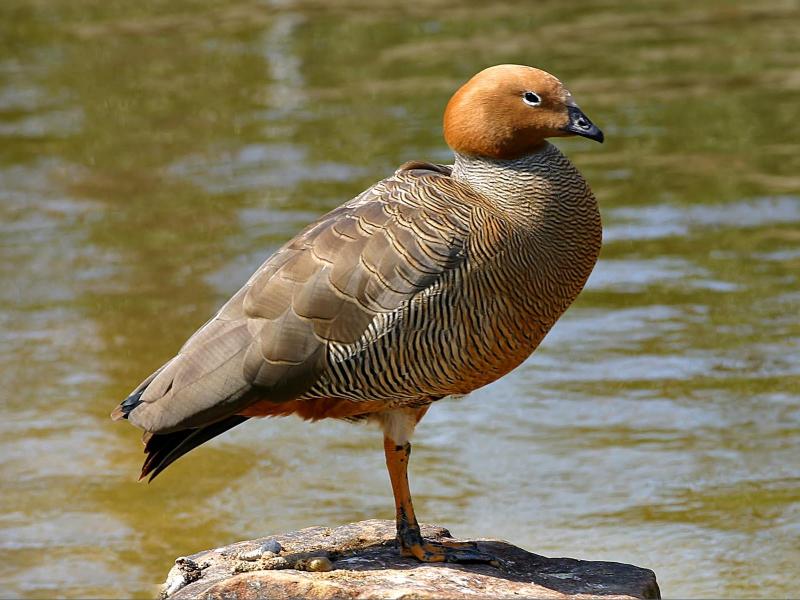
Ruddy-headed goose(Chloephaga rubidiceps)
Phylum —chordata
Class — aves
Order — anseriformes
Family — anatidae
Genus – chloephaga
Appearance
Ruddy-headed goose is a stocky 45–50 cm bird with a pale grey back, and black-barred rich buff underparts. The head and upper neck are chestnut brown. Sexes are similar.
Habitat
It breeds on open grassy plains in Tierra del Fuego, Chile and the Falkland Islands. The South American birds are now very rare. They winter on lowlands in southern Argentina, some distance north of the breeding range. The Falklands population is resident.
Behavior
The ruddy-headed goose is gregarious and can be seen in flocks (only in Falkland Islands) outside the breeding season, often mixed with upland goose and ashy-headed goose. However, it becomes very aggressive when breeding. The adults can attack larger birds entering their territory. Territorial fights may occur, during which males can be injured and even killed.
Diet
The ruddy-headed goose is vegetarian and feeds on leaves, roots, stems and seed-heads of grasses and sedges. During winter, it feeds mainly in cultivated areas and stubbles.
Reproduction
The breeding season starts between September and November in Falkland Islands, and the peak laying occurs in mid-October on the continent.
The mated pairs have long-term pair-bonds and usually pair up for life. They are monogamous. The ruddy-headed goose nests in single pair or in loose groups. The nest is built among the vegetation on the ground. It is usually hidden among tall grasses, bush or below overhanging rock. Occasionally, this species may use an abandoned burrow of Magellanic penguin. The nest is made with grasses and soft vegetation, and lined with down.
The female lays 3-8 creamy-white eggs, and incubates alone during about one month. She is guarded by the male during this period. At hatching, the chicks have dark and pale grey down, black bill and legs. They remain about 15 hours in the nest where they are brooded to dry their plumage. Then, they leave the nest definitively and reach the water and the nearest feeding areas. They are able to feed themselves immediately.
In captivity
Lifespan in captivity is up to 25 years.
When keeping this species, it is necessary to have a pool with water or a natural reservoir. The optimal ratio of the reservoir area to pasture is 20% water and 80% pasture. If you are not going to breed the birds, then the reservoir is not required.The optimal area of the entire enclosure is 200 sq. m. The optimal height of grass in the pasture is 7.5 cm.
It is necessary to build a poultry house on the territory of the aviary. Geese will be able to hide in it from the cold and wind in the cold season. You need constantly to update the litter in the poultry house. For such bedding, you will need about 40 kg of dry straw (hay). It is important to replace the wet bedding in time. Otherwise, the plumage quickly becomes dirty and does not protect the bird from the cold.
The poultry house should be made of wood or mud. Humidity and drafts are not allowed in it. Proper maintenance of geese is the key to their health.
During the construction of a poultry house, it is very important to take into account that at least one square meter of floor space should be allocated for one adult goose. With a higher density, the room will quickly become polluted, and the air in it will stagnate. This can cause diseases of wild geese and significantly reduce their productivity. Once a year, you need to whitewash the walls with freshly slaked lime.
Geese eat natural grasses. You can add to herbs: wheat grains, waterfowl pellets, and chicken feed. If there is not enough grass on the pasture, it is necessary to bring mown fresh grass. In winter, you can feed sliced vegetables, especially good to give cabbage and salads. Not averse to eating worms, insects and shellfish sometimes.
 Russian
Russian
 English
English
























